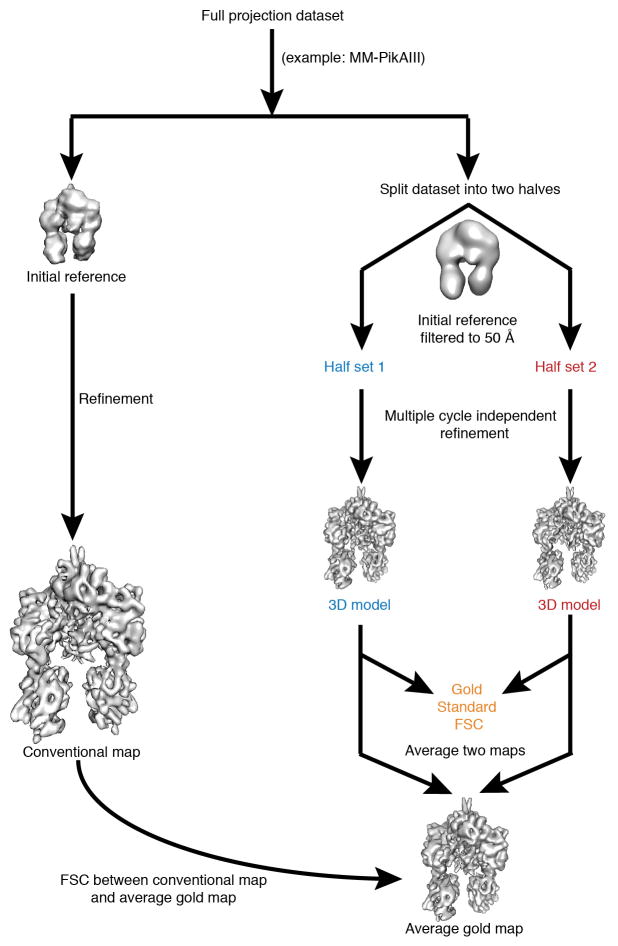Extended Data Figure 9.
Analysis of ACP-less PikAIII. a, Overlay of gel filtration chromatography elution profiles of PikAIII/ΔACP5 (blue) and PikAIII/Δ1403-1562 (red). PikAIII/ΔACP5 includes the post-ACP dimerization helices and elutes as a dimer whereas PikAIII/Δ1403-1562 lacks the dimerization helices and elutes as a monomer. The first peak in the red trace is apparently aggregated protein in the void volume of the S300 column. b, Solid rendering (left) and transparent representation with modeled structures (right) of the cryo-EM map of PikAIII/ΔACP5 at a resolution of 7.8 Å. c, Example HPLC traces of chromophore-CoA loading experiments. The blue trace (280 nm) indicates the level of protein and the red trace (550 nm) indicates the chromophore from CoA 547 (New England Biolabs). Incubation of apo-ACP4-PikAIII/C209A/ΔACP5 with SVP and CoA 547 indicates 100% of the ACP4 was in the apo form, based on molar extinction coefficients for protein and chromophore. d, Incubation of pentaketide-ACP4-PikAIII/C209A/ΔACP5 with SVP and CoA 547 indicates 80% of the ACP4 was loaded with pentaketide. e, Conventional FSC curve for the 3D reconstruction of holo-ACP4/PikAIII/C209A/ΔACP5 (no pentaketide added). f, Orthogonal views of solid rendering (top) and transparent representations with modeled structures (bottom) of the cryo-EM 3D reconstruction of holo-ACP4/PikAIII/C209A/ΔACP5 (no pentaketide added). No density for the upstream ACP4 was observed in the cryo-EM map even though densities corresponding to the N-terminal docking domains are clearly visible (compare with Fig. 3b). Fit into the 3D maps shown in panels b and f are the structures of DEBS module 5 KS (blue, 2HG4), DEBS module 5 AT (green, 2HG4) and DEBS module 1 KR (purple, 2FR0).

